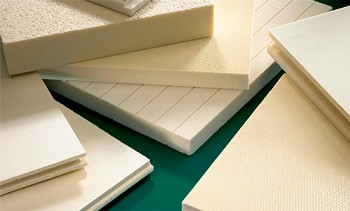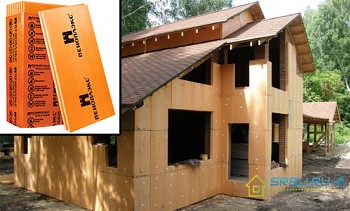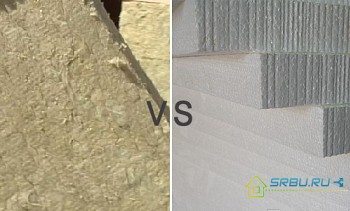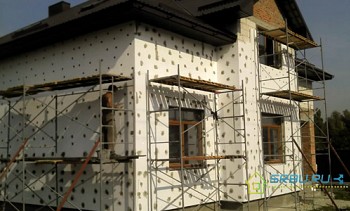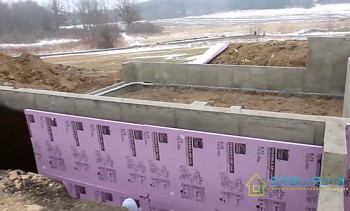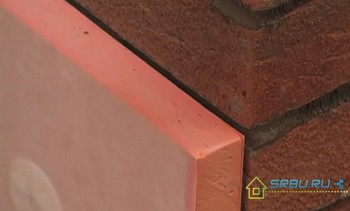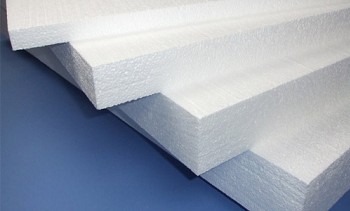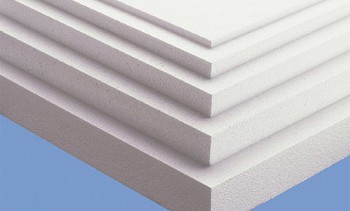What determines the thermal conductivity of expanded polystyrene
Enumerating the parameters of heaters, the thermal conductivity of the material is always put in the first place. It depends on how much air is contained in this substance. Indeed, it is the air environment that serves as an excellent natural heat insulator. Note that the ability to conduct heat decreases with increasing rarefaction of the medium. So it is best to keep the heat layer from the vacuum.
The work of thermoses is based on this principle. But during construction, creating a vacuum is problematic, therefore they are limited to ordinary air. For example, the low thermal conductivity of expanded polystyrene, especially extruded, is due to the fact that there is more than enough of this air in it.
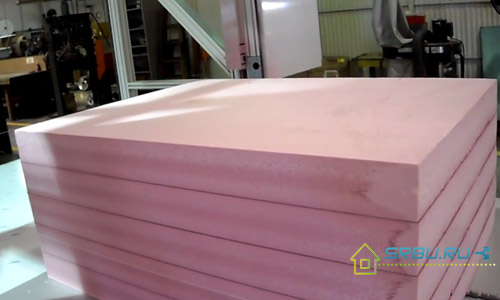
What affects the ability of expanded polystyrene to conduct heat
In order to clearly understand what thermal conductivity is, we take a piece of material of a meter thickness and an area of one square meter. Moreover, we heat one side of it, and leave the other cold. The difference in these temperatures should be ten times. By measuring the amount of heat, which in one second goes to the cold side, we obtain the coefficient of thermal conductivity.
Why is polystyrene foam capable of retaining both heat and cold well? It turns out that the whole thing is in its structure. Structurally, this material consists of many sealed multifaceted cells having a size of 2 to 8 millimeters. Inside, they have air - it is 98 percent and serves as an excellent heat insulator. Polystyrene accounts for 2% of the volume. And by weight polystyrene is 100%, because air, relatively speaking, has no mass.
It should be noted that the thermal conductivity of the extruded polystyrene foam remains unchanged over time. This compares this material favorably with other foams whose cells are filled not with air but with another gas. After all, this gas has the ability to gradually evaporate, and the air remains inside the sealed polystyrene foam cells.
When buying foam, we usually ask the seller what the density of this material is. After all, we are used to the fact that density and the ability to conduct heat are inextricably linked with each other. There are even tables of this dependence, with which you can choose the appropriate brand of insulation.
| Density of expanded polystyrene kg / m3 | Thermal Conductivity W / MKV |
|---|---|
| 10 | 0,044 |
| 15 | 0,038 |
| 20 | 0,035 |
| 25 | 0,034 |
| 30 | 0,033 |
| 35 | 0,032 |
However, at present, they have come up with an improved insulation, in which graphite additives are introduced. Thanks to them, the coefficient of thermal conductivity of expanded polystyrene of various densities remains unchanged. Its value is from 0.03 to 0.033 watts per meter per Kelvin. So now, acquiring a modern advanced EPSP, there is no need to check its density.
Labeling of expanded polystyrene whose thermal conductivity is independent of density:
| Styrofoam brand | Thermal Conductivity W / MKV |
|---|---|
| EPS 50 | 0.031 - 0.032 |
| EPS 70 | 0.033 - 0.032 |
| EPS 80 | 0.031 |
| EPS 100 | 0.030 - 0.033 |
| EPS 120 | 0.031 |
| EPS 150 | 0.030 - 0.031 |
| EPS 200 | 0.031 |
Expanded polystyrene and other heaters: comparison
Let us compare the thermal conductivity of mineral wool and polystyrene foam. For the latter, this indicator is less and ranges from 0.028 to 0.034 watts per meter per Kelvin. The thermal insulation properties of EPSS without graphite additives decrease with increasing density. For example, extruded polystyrene foam, whose thermal conductivity is 0.03 watts per meter per Kelvin, has a density of 45 kilograms per cubic meter.
Comparing these indicators for a variety of heaters, we can conclude in favor of EPS. The two-centimeter layer of this material holds heat in the same way as mineral wool with a layer of 3.8 centimeters, ordinary polystyrene with a layer of 3 centimeters, and a wooden board 20 cm thick. Brick but you have to lay out a wall 37 centimeters thick, and foam concrete - 27 centimeters. Impressive, isn't it?

